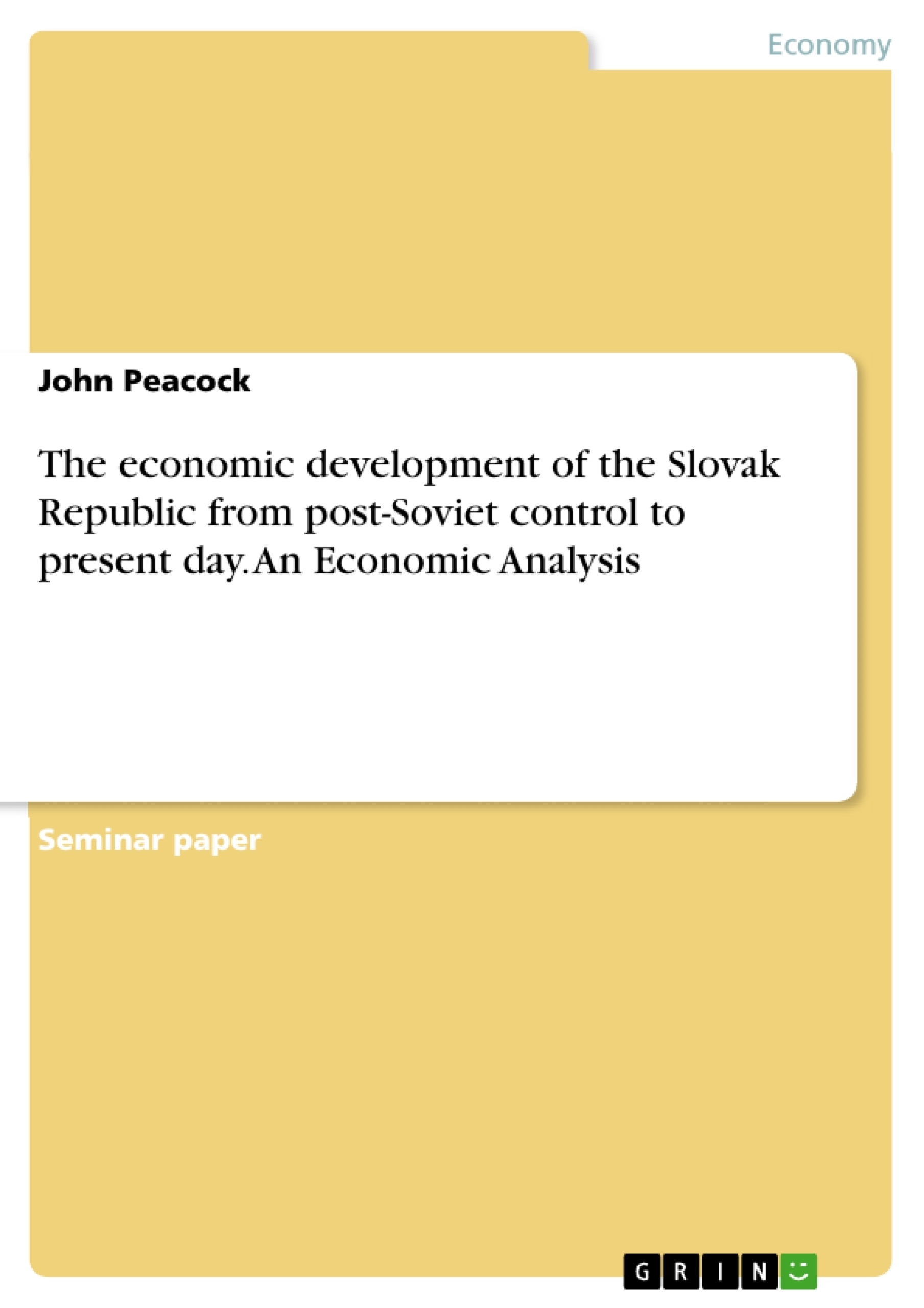Excerpt
Contents
Introduction
Table of Abbreviations and Terms
A Brief History of Slovakia’s Economy
An Analysis of Slovakia’s Key Economic Indicators of Well-being
Slovakia’s Economic Growth
Slovakia’s Openness
Slovakia’s Public Debt
Future Outlook
References
Introduction
The following paper explores the recent economic developments of the Slovak Republic, from its accession into the European Union in the early 2000s, throughout the European monetary crisis in the years 2008 - 2009 and finally reflects upon the country’s current economic state. In doing so, this paper analyzes the most relevant indicators of international and domestic economic well-being and describes some of the underlying factors for these developments. An analysis of the degree to which Slovakia has overcome the hardships imposed by the economic crisis is also presented.
The analyses in this paper rely on statistical information available from public databases and, when applicable, consultation of expert literature for an interpretation of the data. When doing so, the author has attempted to provide data for comparison and context, generally with the average from the EU 27 states or of the other Visegrád Group members, when available.
This paper only considers a limited number of indicators of economic well-being for these analyses: balance of payments, openness, foreign direct investment, government deficit and debt, inflation, economic growth, employment, and investment. As a result, some other economically relevant topics may be excluded which could provide an even better analysis of the problem. Social costs and other non-economic factors are entirely omitted from this paper although they play an important role in any country’s standard of living.
Finally, it is important to note during the analysis of the developments in 2009 and the years afterward that all changes cannot be attributed to the European Debt Crisis as another important event occurred: Slovakia adopted the Euro as its national currency; an event that is often cited as causing initial inflation (European Central Bank, 2006).
Table of Abbreviations and Terms
illustration not visible in this excerpt
A Brief History of Slovakia’s Economy
The Slovak Republic, commonly referred to as Slovakia, is a country located in central Europe. With a population of approximately five million people and an area of about 49,000 square kilometers, Slovakia is relatively small both in terms of size and population. As predicted by the Gravity Model of Trade (Nello, 2009), Slovakia exhibits a large degree of openness due to its small size and relatively close proximity to economically significant countries. There is a high concentration of economic activity in western Slovakia around Bratislava, with large discrepancies in income distribution across geographic regions due to this uneven economic activity (Votruba, n.d.).
In 2004, after a period of relatively strong growth attributed largely to a series of liberal economic reforms, the Slovak Republic was accepted into the European Union. In the years that followed, Slovakia boasted some of the highest annual rates of GDP growth among all European Union and OECD countries (Ručinska, Urge, Ručinsky, 2009, pp. 52-55). This rapid economic growth earned Slovakia the nickname of the “Tatra Tiger” (referring Slovakia’s Tatra mountain range) as the nation displayed many characteristics similar to those of other “tiger” nations such as Singapore, South Korea, Taiwan and Hong Kong. During this period, the Slovak economy began opened dramatically and began to converge with the rest of Europe (International Monetary Fund, 2014, p. 4).
During this period, Slovakia was able to attract a great deal of foreign direct investment, most notably from several large automobile makers such as Volkswagen, Peugot and Kia Motors which opened production plants, and by 2008 the automobile industry alone accounted for around 25% of Slovakia’s annual GDP (TASR, 2008). During this period, along with other Viségrad countries, Slovakia was able to become an integral part of GVCs. (International Monetary Fund, 2014, p. 5).
In 2007 a financial crisis occurred in the financial sector of the United States and, in the following years, spilled over to elsewhere in the world.
[...]
- Quote paper
- John Peacock (Author), 2015, The economic development of the Slovak Republic from post-Soviet control to present day. An Economic Analysis, Munich, GRIN Verlag, https://www.grin.com/document/366627
Publish now - it's free






















Comments